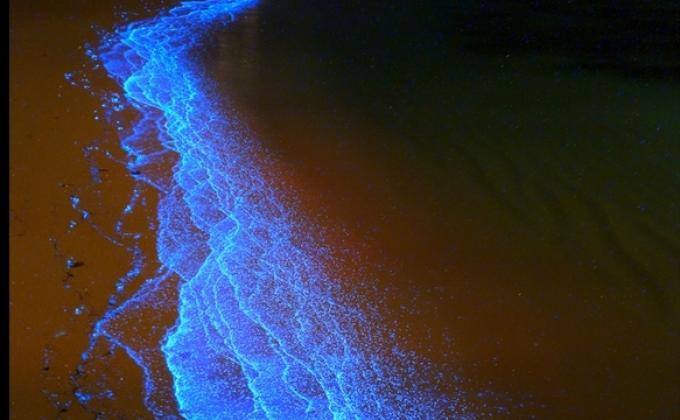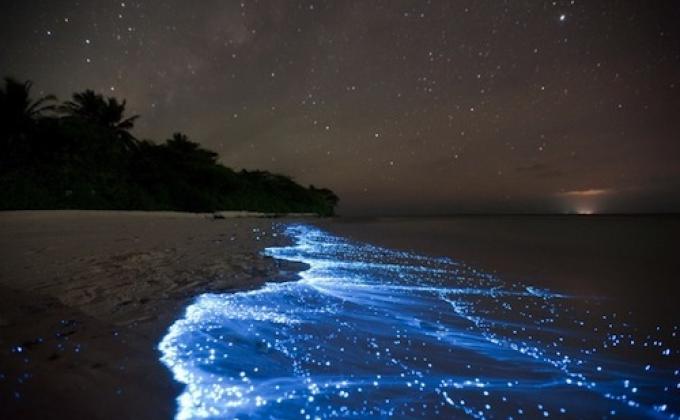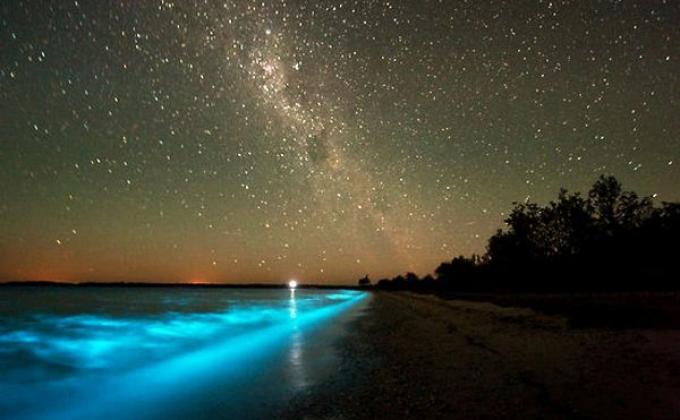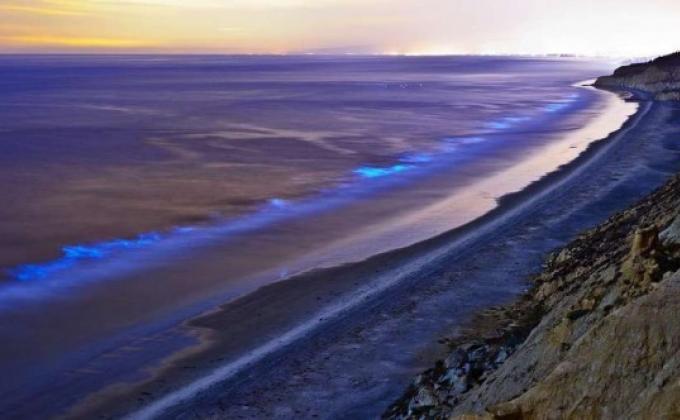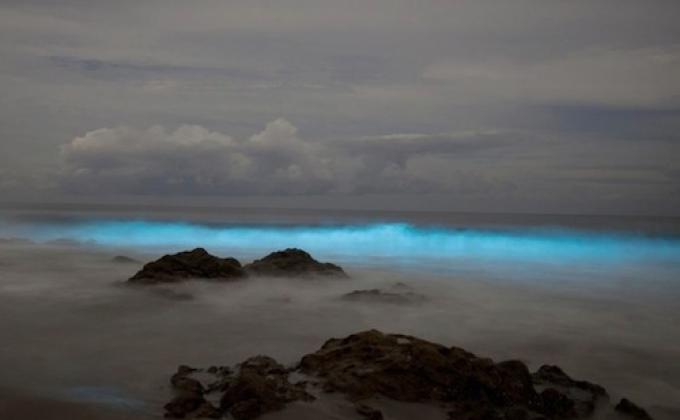
The magnificent beaches of one of the best resorts in the world in the Maldives glow blue at night. Attention: it's not dangerous. Scientists have found out that the whole secret is hidden in bioluminescent phytoplankton.
According to scientists, the bioluminescent apparatus of these protozoa works like this. When moving in the water column, mechanical forces cause an electrical pulse that rushes inside the cell, to a special vacuole. This vacuole, a hollow membrane bubble, is filled with protons. Scintollons are connected to it — membrane bubbles with the "glowing" enzyme luciferase. When an electric pulse comes to the vacuole, proton gates open between it and the scintillon. Hydrogen ions flow into the scintillon and acidify the medium in it, which makes the bioluminescent reaction possible.
Glowing beaches in the Maldives can be observed quite often, especially on those nights when the moon is not visible in the sky. Special night expeditions are even organized for divers and those who want to swim in the "ocean of stars".
Best of all, the glow of these protozoa can be observed during the breeding season: the number of unicellular becomes such that sea water resembles milk — although it is too bright blue in color. However, it is necessary to admire dinoflagellates with caution: many of them produce toxins dangerous to humans and animals, so when there are too many of them, it will be safer to get aesthetic pleasure from the glowing tide on the shore.

